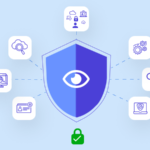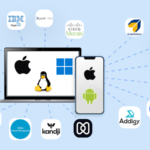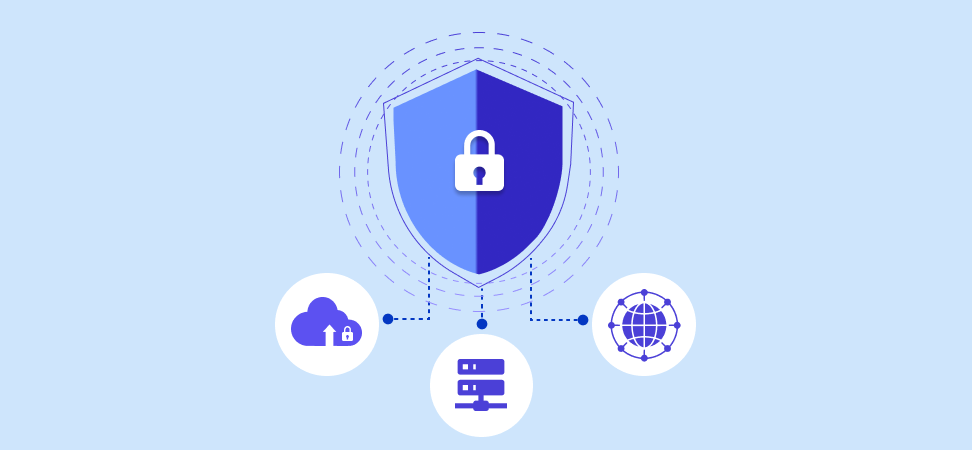Table Of Content
- 1. Understanding DNS Filtering Solutions
- 2. Why Businesses Look for DNSFilter Alternatives
- 3. Evaluation Criteria for Choosing the Right Alternative
- 4. Top DNSFilter Alternatives: Ranked and Reviewed
- 5. Comparative Analysis of DNSFilter Alternatives
- 6. Making the Right Choice for Your Business
- 7. Future Trends in DNS Filtering and Threat Protection
- Conclusion
Top DNSFilter Alternatives to Protect Your Business from Internet Threats
-
October 1, 2025
-
DNS filtering works by intercepting DNS queries and deciding whether to allow, block, or redirect them.
- Example: A user types badsite.com→ DNS filter checks if it’s malicious → blocks the request instead of resolving the IP.
- DNS security providers (e.g., Cisco Umbrella, Cloudflare Gateway, Quad9)
- Secure Web Gateway / SSE solutions (e.g. Kitecyber, Zscaler, Netskope)
- Enterprise DNS servers with filtering policies
This guide explores top DNSFilter alternatives. You will learn why this is the best time to switch.
Let’s dive in.
1. Understanding DNS Filtering Solutions
What Is DNS Filtering?
How DNS Filtering Protects Against Modern Internet Threats
Key Features to Expect in DNS Filtering Tools
- Global anycast network for low-latency resolution
- Real-time malware and phishing intelligence
- Custom block and allow lists
- Detailed reporting with per-user or per-device logs
- Roaming clients for off-network laptops and mobiles
- API access for SIEM or SOAR integrations
2. Why Businesses Look for DNSFilter Alternatives
-
⚠️ Limited inspection capability
DNS filtering only sees domain names, not the full URL. - Example: It can block drive.google.com, but not a specific malicious file within Google Drive.
-
⚠️ Bypassable without endpoint agent
If a user configures a different DNS resolver (e.g., 8.8.8.8 or 1.1.1.1) and you don’t enforce DNS routing, filtering can be bypassed. -
⚠️ Encrypted DNS challenges (DoH/DoT)
DNS-over-HTTPS (DoH) and DNS-over-TLS (DoT) encrypt queries, which can bypass traditional DNS filters unless you enforce your own resolver. -
⚠️ Over-blocking risk
If not tuned properly, DNS filters can block legitimate SaaS apps or CDN domains, breaking business workflows. -
⚠️ No inline data protection
It doesn’t stop data exfiltration through allowed SaaS (e.g., uploading sensitive data to ChatGPT or Dropbox). For that, you need DLP or CASB.
Pricing and Cost Concerns
Advanced Security Needs Beyond DNSFilter’s Scope
3. Evaluation Criteria for Choosing the Right Alternative
1. Coverage & Threat Intelligence
- Size and freshness of the threat intelligence feed (e.g., phishing domains, C2 servers).
- Ability to block newly registered domains (common in phishing).
- Coverage of SaaS apps and cloud services.
- Support for blocking by categories (e.g., gambling, adult, crypto mining).
2. Granularity of Control
- Can you block at the domain level only, or does it allow URL-level filtering?
- Can policies be applied by user, group, device, or location?
- Ability to create exceptions for business apps that share domains (e.g., Google Drive vs. Google Docs).
3. Deployment & Enforcement
- Cloud-based resolver vs. on-prem vs. endpoint agent.
- Can it force DNS routing (prevent bypass via 8.8.8.8, DoH, DoT)?
- Integration with VPN, firewalls, or endpoint security agents.
- Multi-platform support (Windows, Mac, Linux, mobile, IoT).
4. Visibility & Logging
- Centralized reporting of DNS queries.
- Ability to identify shadow SaaS and unsanctioned applications.
- Integration with SIEM/SOAR tools.
- Real-time alerting for blocked/allowed malicious requests.
5. Performance & Reliability
- Latency added per query.
- Global footprint of resolvers (edge locations).
- Failover and redundancy.
- Support for high-throughput environments.
6. Security & Privacy
- Can it inspect encrypted DNS traffic (DoH/DoT enforcement)?
- Does it provide protection against data exfiltration over DNS tunneling?
- Logging & retention policies — is your DNS data shared with vendor for analytics/AI training?
- Compliance with GDPR, HIPAA, etc.
7. Integration with Broader Security Stack
- Works standalone vs. integrated into SASE/SSE/SWG/CASB/DLP.
- Can it sync with Active Directory/SSO for user identity-based policies?
- API support for automation and custom rules.
8. Cost & Licensing
- Per-user or per-device pricing.
- Free vs. enterprise tiers (e.g., Quad9 vs. Kitecyber vs. Cisco Umbrella).
- Scalability for thousands of users and devices.
4. Top DNSFilter Alternatives: Ranked and Reviewed
1. Kitecyber
Overview and Core Features
Kitecyber stands out as the top DNSFilter alternative because it delivers more comprehensive, endpoint-centric protection rather than relying mainly on DNS-level filtering. While DNSFilter does a good job blocking malicious and unwanted content by inspecting DNS queries in real-time, Kitecyber extends that visibility and control inside SaaS and web applications, enforcing policies directly on the device. This means even when users are off the corporate network—or using untrusted WiFi or remote locations—Kitecyber’s Secure Web Gateway (SWG) can reliably govern how apps and websites are used, prevent data leaks, manage unsanctioned SaaS, and block threats from phishing, malware or risky domains. Moreover, its approach avoids some of the latency and configuration complexity that cloud-gateway or DNS-only filtering solutions commonly incur. Thus, for organizations with remote work, SaaS sprawl, or high regulatory/data security needs, Kitecyber offers stronger, more granular and consistent protection.
- Network traffic-based filtering for better coverage than DNS alone.
- Full web content categories with custom blocks.
- AI threat intelligence blocks malware and phishing in real-time.
- Roaming clients for Windows, Mac, Linux, and mobile via MDM.
- Active Directory and SSO integration for seamless access.
- Full API access for custom automations.
- Advanced reporting and analytics with 90+ day log retention.
- Compliance tools integrate with GRC platforms like SOC 2 and HIPAA.
Best Suited Business Use Case
Kitecyber fits growing businesses with remote workers. It secures sensitive data leakage MSPs love multi-tenant portals. You replace multiple tools with one, cutting costs by 60%.
|
Feature |
Kitecyber |
DNSFilter Basic |
DNSFilter Pro |
DNSFilter Enterprise |
| DNS-Based Filtering | ❌ Network traffic based. Better coverage | ✅ | ✅ | ✅ |
| Web Content Categories | ✅ Full categories | ✅ Basic categories | ✅ Full categories | ✅ Full categories |
| Threat Intelligence / Malware Blocking | ✅ | ✅ | ✅ | ✅ |
| Roaming Client (Windows/macOS) | ✅ | ❌ | ✅ | ✅ |
| Custom Block Pages | ❌ | ❌ | ✅ | ✅ |
| Active Directory / SSO Integration | ✅ | ❌ | ✅ | ✅ |
| API Access | ✅ | ❌ | ✅ | ✅ Full API access |
| Reporting & Analytics | ✅ | Basic reports only | Enhanced visibility | Full reporting + data export |
| Policy Scheduling | ❌ | ❌ | ✅ | ✅ |
| Multi-Tenant (MSP portal) | ✅ | ❌ | ✅ (limited) | ✅ (full, with branding) |
| Support Level | Priority support (SLA-backed) | Community / email only | Standard email + chat | Priority support (SLA-backed) |
| Custom Threat Feeds / Whitelisting | ✅ Custom threat feeds | ❌ | Limited manual | ✅ Custom threat feeds |
| Query Log Retention | 90+ days | 3 days | 30 days | 90+ days |
| Compliance & Logging Tools | ✅ Built-in plus integrations to GRC platforms | ❌ | Basic audit trail | ✅ with Syslog + SIEM integration |
| IPv6 Support | ✅ | ❌ | ❌ | ❌ (none across tiers) |
|
Bypass / Blindspot |
Kitecyber Capability |
DNSFilter Capability |
Explanation |
| Encrypted DNS (DoH/DoT) | ✅ Defense-in-depth blocks apps and extensions beyond DNS layer | ❌ Can be bypassed unless blocked | Apps use encrypted DNS, bypassing system DNS. |
| VPN / Proxy Tools | ✅ Block unauthorized apps and monitors sensitive data activity | ❌ DNS filtering loses visibility | DNS queries sent through user VPNs or proxies. |
| Hardcoded IP Access | ✅ Inspects all network traffic regardless of IP | ❌ Invisible at DNS layer | Apps connect directly to IPs, skipping DNS resolution. |
| Tunneling Protocols | ✅ Detects sensitive data using OS-level context, can’t be evaded | ⚠️ Needs deep DNS analytics to detect | Data encoded in DNS queries for exfiltration. |
| Non-browser Apps (Slack, Zoom) | ✅ Full visibility across browsers, native apps, and CLI tools | ❌ Limited app visibility | Many tools beyond browsers are not visible to DNS filtering. |
| Mobile Devices / BYOD | ✅ Supports mobile devices via MDM | ❌ No protection without roaming client | Devices on unmanaged networks without DNS client installed. |
| User Tampering with DNS | ✅ Not reliant on DNS, so unaffected | ❌ May go undetected | Users change DNS settings or use other resolvers. |
| Split-tunnel VPN Scenarios | ✅ No blindspots; monitors all network connections; Kitecyber is first touch point in outgoing traffic | ❌ Local DNS may allow malicious sites | DNS resolved locally, VPN tunnels other traffic. |
| Dynamic/Fast-Flux Domains | ✅ Uses real-time behavioral detection, not just reputation | ⚠️ May bypass until reputation updates | Malware uses rapidly changing domains to evade detection. |
| IPv6 Traffic | ✅ Protocol-agnostic inspection across IPv4 and IPv6 | ⚠️ IPv6 sometimes unfiltered | Some DNS filters miss or ignore IPv6 queries. |
2. Cisco Umbrella
Overview and Core Features
Cisco Umbrella leads in cloud security. It blocks threats at the DNS layer with Talos intel. G2 scores it 4.5 stars. Pricing is custom, often $5-10 per user monthly. Suits enterprises with remote teams.
- DNS-layer enforcement stops malware pre-connection.
- Predictive security blocks emerging threats.
- Secure web gateway inspects HTTPS traffic.
- Roaming client for off-network protection.
- Integrates with 400+ tools like SIEM.
- Content filtering by 80+ categories.
- Real-time reporting and alerts.
- Zero trust access for apps.
Pros and Cons
Best-Suited Business Use Cases
3. Cloudflare Gateway
Secure DNS and Threat Intelligence at Scale
- DNS filtering with HTTP inspection.
- Zero trust policies by identity.
- Threat blocking via global network.
- Secure web gateway for SaaS.
- Analytics dashboard for insights.
- Supports DoH/DoT encryption.
- Integrates with MDM tools.
- High-speed anycast routing.
Benefits for Enterprises and SMEs
Notable Limitations
4. Zscaler Internet Access
How Zscaler Extends DNS Filtering into SSE
Zscaler turns DNS into full SSE. It inspects all traffic. G2 4.5 stars. Pricing $8-12 per user monthly.
- DNS security with TLS decryption.
- AI phishing and malware detection.
- Zero trust for internet and SaaS.
- Data loss prevention rules.
- Global PoPs for low latency.
- Sandbox for unknowns.
- Compliance logging.
- User-based policies.
Key Strengths
Potential Drawbacks
5. Palo Alto Prisma Access
Security Capabilities and DNS Filtering Features
- Inline DNS threat prevention.
- SWG and FWaaS integration.
- ZTNA for apps.
- CASB for SaaS control.
- 99.999% uptime.
- App acceleration.
- Advanced reporting.
- Multi-cloud support.
Integration with Zero Trust Architectures
Use Case Scenarios
6. Fortinet FortiGuard DNS Security
Benefits and Differentiators
Best with Fortinet stack. Setup needs expertise.
Challenges and Considerations
- Full DNS visibility.
- Blocks NRDs and parked domains.
- Integrates with FortiGate.
- AI anomaly detection.
- Policy by user/group.
- Logging for compliance.
- Hybrid deployment.
- Threat feed updates.
Enterprise-Level Threat Protection
7. WebTitan by TitanHQ
Ease of Deployment and Management
Where It Falls Short
- Malware and phishing blocks.
- 80+ content categories.
- Time-of-click protection.
- Custom policies.
- Real-time monitoring.
- Reporting dashboards.
- Easy cloud deploy.
- 2FA support.
SMB-Focused DNS Security Solution
8. OpenDNS (Legacy Cisco Product)
Strengths and Weaknesses
Best-Fit Businesses
- Basic content filtering.
- Malware domain blocks.
- Family/business modes.
- Custom block lists.
- Reporting basics.
- Easy router setup.
- Phishing protection.
- Global resolvers.
Still Relevant or Outdated?
9. Quad9
Security Features for Individuals and Small Teams
Limitations for Enterprise Environments
- Malware/phishing blocks.
- No IP logging.
- GDPR compliant.
- Global anycast.
- Encryption support.
- Real-time intel.
- IoT protection.
- Easy config.
Free, Privacy-First DNS Filtering
10. CleanBrowsing
Family and Business-Focused DNS Filtering
- 19+ category blocks.
- Malware/botnet protection.
- SafeSearch enforcement.
- Custom domains.
- Encrypted DNS.
- Dashboard monitoring.
- Global scale.
- No-logs option.
Key Features and Benefits
Scalability Concerns
11. SafeDNS
Flexible Filtering Policies and Reporting
- Real-time threat blocks.
- AI/ML detection.
- Custom categories.
- Analytics insights.
- Zero-day protection.
- MSP multi-tenant.
- Applocker extras.
- Compliance logs.
SMB and Enterprise Applications
Pros and Cons
12. Comodo Secure Internet Gateway
AI-Powered DNS Filtering
- Threat lab intel.
- 80+ categories.
- Off-network protection.
- Custom block pages.
- Real-time reports.
- Mobile apps.
- Quick deploy.
- Phishing/malware blocks.
Security Layers and Integration
Where It Excels vs. Where It Lags
13. Akamai Enterprise Threat Protector
Leveraging Akamai’s Threat Intelligence Network
- Proactive domain blocks.
- DNS exfiltration stop.
- Shadow IT control.
- Client for all OS.
- Policy by location.
- SIEM integration.
- Real-time analysis.
- Flexible on-ramps.
Security Layers and Integration
Drawbacks for Some Organizations
5. Comparative Analysis of DNSFilter Alternatives
Feature-by-Feature Comparison Table
|
Feature |
Kitecyber |
Cisco Umbrella |
Cloudflare |
Zscaler |
Palo Alto |
Fortinet |
WebTitan |
OpenDNS |
Quad9 |
CleanBrowsing |
SafeDNS |
Comodo |
Akamai |
| AI Threat Detection | ✅ | ✅ | ✅ | ✅ | ✅ | ✅ | ✅ | ❌ | ❌ | ❌ | ✅ | ✅ | ✅ |
| Content Categories | Full | 80+ | 50+ | Full | Full | 70+ | 80+ | Basic | None | 19+ | Custom | 80+ | Risk-based |
| Roaming Client | ✅ | ✅ | ✅ | ✅ | ✅ | ✅ | ❌ | ❌ | ❌ | ❌ | ✅ | ✅ | ✅ |
| Zero Trust Integration | ✅ | ✅ | ✅ | ✅ | ✅ | Partial | ❌ | ❌ | ❌ | ❌ | Partial | ❌ | ✅ |
| Reporting Depth | Advanced | Real-time | Basic | Full | Advanced | Good | Comprehensive | Basic | None | Dashboard | Insights | Real-time | API/SIEM |
| IPv6 Support | ✅ | ✅ | ✅ | ✅ | ✅ | ✅ | ✅ | Partial | ✅ | ✅ | ✅ | Partial | ✅ |
| Pricing per User/Mo | $3+ | $5-10 | $5+ | $8-12 | Custom | Bundled | $0.40+ | Free-$3 | Free | $2.50+ | $0.90+ | Custom | Custom |
| G2 Rating | 4.8 | 4.5 | 4.6 | 4.5 | 4.4 | 4.5 | 4.7 | 4.0 | 4.2 | 4.3 | 4.5 | 4.1 | 4.4 |
Pricing Models Compared
Scalability Across Different Business Sizes
Industry-Specific Suitability (Finance, Healthcare, Education, Retail)
6. Making the Right Choice for Your Business
Aligning Security Needs with Business Goals
Questions to Ask Vendors Before Choosing
Common Pitfalls to Avoid When Switching
7. Future Trends in DNS Filtering and Threat Protection
AI and Machine Learning in DNS Security
DNS Filtering as Part of Zero Trust and SSE
Privacy-Centric DNS Services on the Rise
Conclusion
Recap of Why Businesses Seek DNSFilter Alternatives
Action Steps: How to Move Forward with the Right Choice
Frequently Asked Questions

Ajay Gulati
Ajay Gulati is a passionate entrepreneur focused on bringing innovative products to market that solve real-world problems with high impact. He is highly skilled in building and leading effective software development teams, driving success through strong leadership and technical expertise. With deep knowledge across multiple domains, including virtualization, networking, storage, cloud environments, and on-premises systems, he excels in product development and troubleshooting. His experience spans global development environments, working across multiple geographies. As the co-founder of Kitecyber, he is dedicated to advancing AI-driven security solutions.










